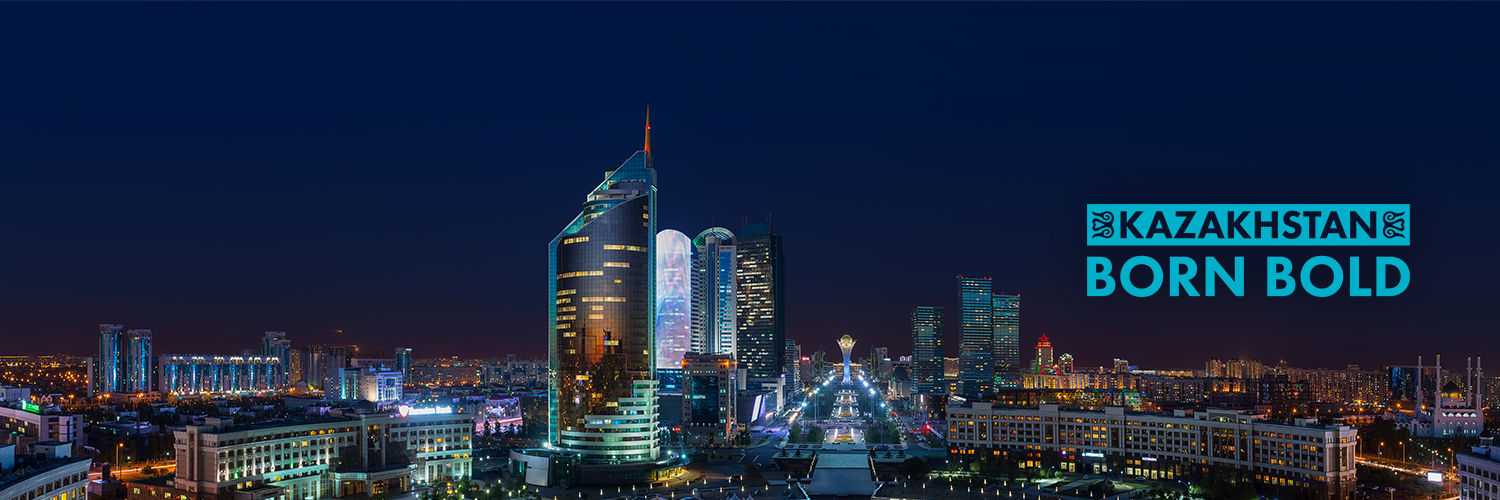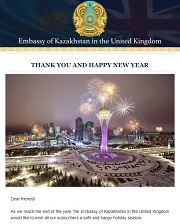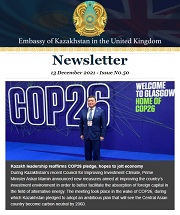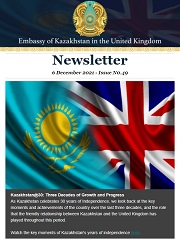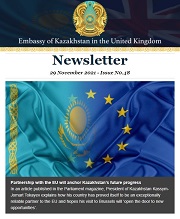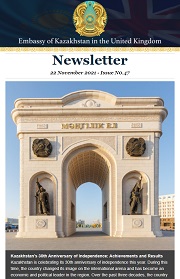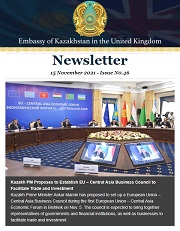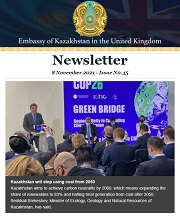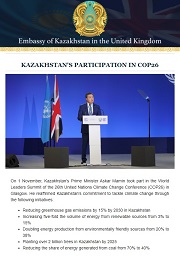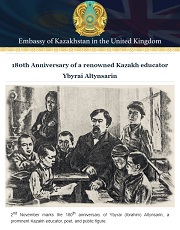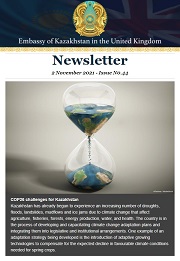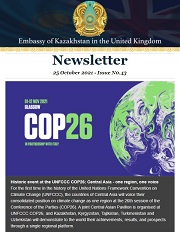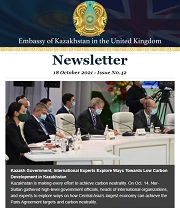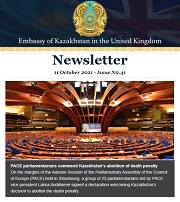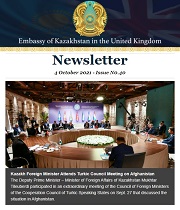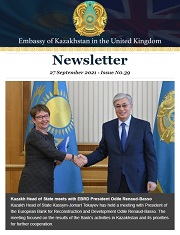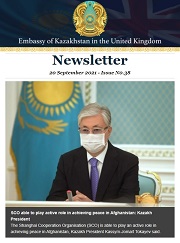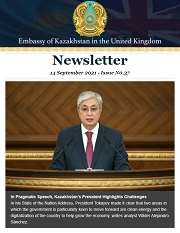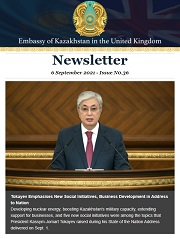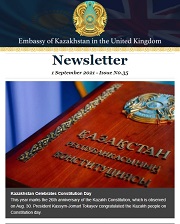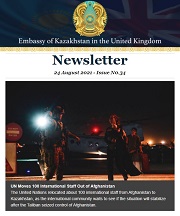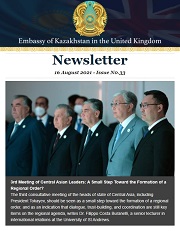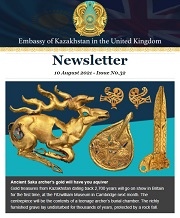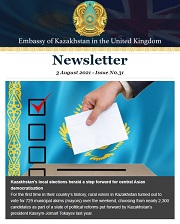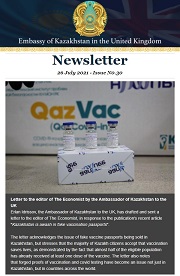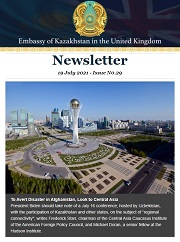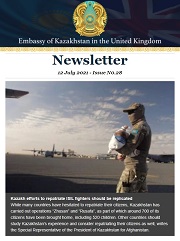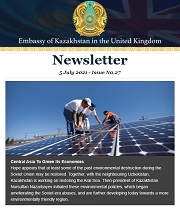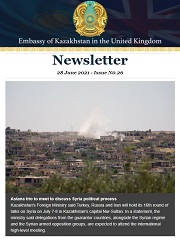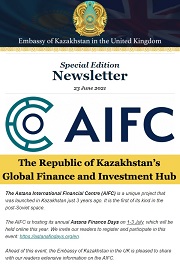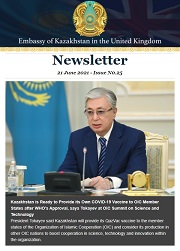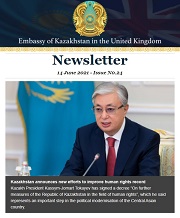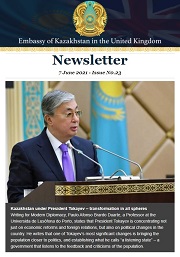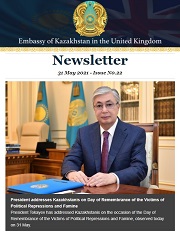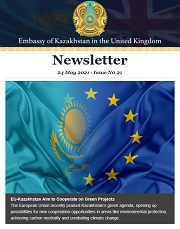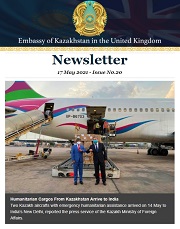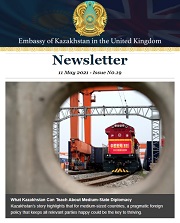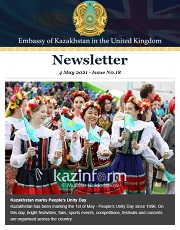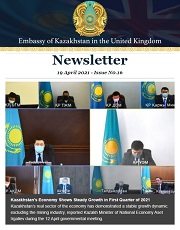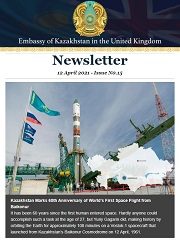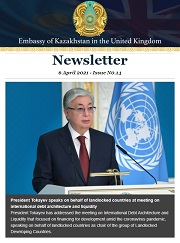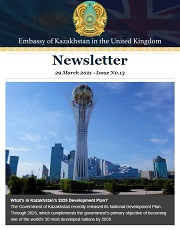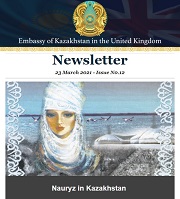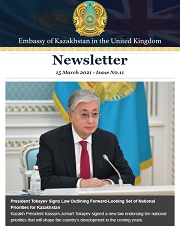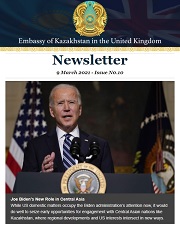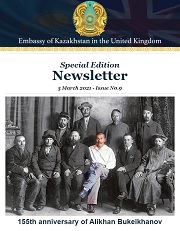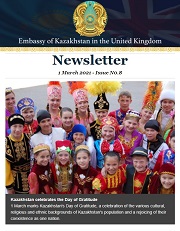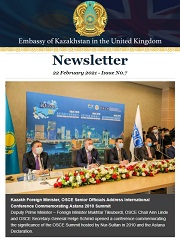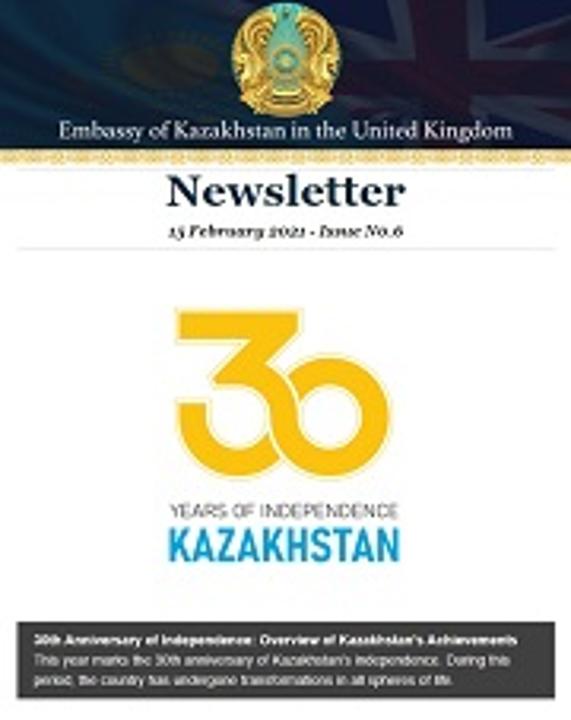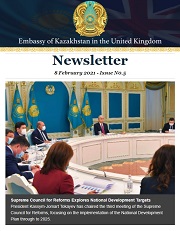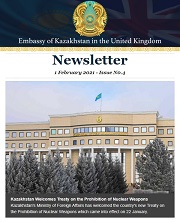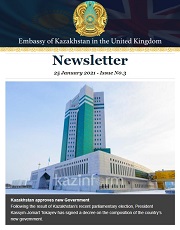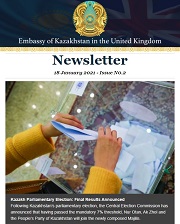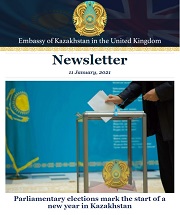The year 2021 marks the 175th anniversary of Zhambyl Zhabaiuly, a Kazakh traditional folk singer – akyn.
According to a family legend, his mother, Uldan, gave birth to him near the Zhambyl mountain, close to the headwaters of the Shu River, while fleeing an attack on her village. His father, Zhabai, then named his son after the mountain.
As a boy, Zhambyl learned how to play the dombyra (traditional Kazakh string musical instrument) and at the age of 14 left his home to become an akyn. He learned the art of improvisation from the legendary akyn Suiinbai Aronuly. Zhambyl sang exclusively in the Kazakh language.
Zhambyl Zhabaiuly died on 22 June 1945, eight months before his 100th birthday. He was buried in Almaty in a garden which he cultivated with his own hands.
He performed songs, mainly satirical, frequently defeating well-known akyns at aitys competitions (traditional form of improvised song competitions). From his improvisations of the prerevolutionary period were transcribed the epics Suranshy Batyr and Otegen Batyr, as well as the tales The Khan and the Akyn and Story of a Lazy Fellow.
After the October Revolution, his songs became part of the new everyday life of the Kazakh village. His works have been translated into Russian and into the languages of other peoples of the USSR and have earned recognition throughout the Soviet Union. During the Great Patriotic War of 1941-45, Zhabaiuly’s patriotic works echoed throughout the country, especially his well-known Leningraders, My Children!
Combining oral and literary forms, Zhabaiuly achieved a new poetic manner distinguished by its psychological fullness, by its concrete depiction of social life and nature, and by the sincerity and epic simplicity of its narrative.
Zhabaiuly was elected a deputy to the Supreme Soviet of the Kazakh SSR in 1938 and received the State Prize of the USSR in 1941. He was awarded the Order of Lenin and two other orders.
The Kazakh city of Taraz was named after Zhambyl from 1938 to 1997. The Zhambyl Region of Kazakhstan, in which Taraz is located, still bears his name.
Kazakhstan has a rich and varied culture, which reflects both our nomadic heritage and our modernising national identity. This important combination of ancient and contemporary culture reflects the openness and inclusivity of our country, values which are at the foundation of Kazakh society.
We are committed to preserving and celebrating this unique culture, which can be seen in the articles below. These include recent news and initiatives surrounding Kazakhstan's history, tourism, nature, and arts.
Anthologies of Kazakh prose and poetry by Cambridge University Press

Why Kazakhstan should be on your travel list

Kazakhstan: The Land of Wonders

Musical Instruments Museum in Almaty

Korgalzhyn: land of birds, saline lakes and blue sky

Discover a heaven for birdwatchers: the best birdwatching destinations in Kazakhstan
This year, Kazakhstan marks 750 years since the formation of the Golden Horde state. Initiated in 2019 by Head of state Kassym-Jomart Tokayev, the idea of celebrating the 750th anniversary of the Golden Horde became a logical continuation of the idea of the First President of the Republic of Kazakhstan - Elbassy Nursultan Nazarbayev.
The topic of objective and scientific coverage of the role of Ulug Ulus (Ulus of Juchi, Golden Horde) was repeatedly touched upon in the works of Elbassy, for example, in such fundamental monographs as "Flow of History", "Kazakhstan's way", as well as in the article "Seven Facets of the Great Steppe". On August 24, 2014, N. Nazarbayev in his interview in Ulytau actually marked the line of the historical succession of Kazakhs from the Golden Horde. On December 22, 2014, the First President of Kazakhstan once again voiced the thesis that the Golden Horde is the historical predecessor of the Kazakh khanate. On September 11, 2015, in Astana, at a solemn meeting dedicated to the 550th anniversary of the formation of the Kazakh khanate, this thesis was restated.
"The Kazakh khanate is the legitimate heir of the states of Saks, Huns, Usun, as well as the Great Turkic Khaganate, Desht-I-Kipchak and the Golden Horde," Elbassy said.
On February 18, this year, the Press Service of the First President of Kazakhstan - Elbassy published his words about the history of the Kazakh people on his Instagram page: "My contemporaries, subsequent generations in their time counted history only from the period of the October Revolution. For us, there was no other history of the Kazakhs, but now we must study it in depth. Our ancestors are Huns, and the Great Turkic Khaganate is even closer in time. Our land has always been the center of those states. The next is the Golden Horde. If you summarize all this, our history dates back two thousand years. Having passed through such a huge period of time, we managed to preserve our language, religion, and identity. And we should educate our young people in this spirit."
The history of the formation of the Golden Horde dates back to 1269, when the so-called Talas Kurultai was held on the territory of the current Zhambyl region, where a decision was made to divide the Mongol Empire. As a result, the Ulus of Juchi (Golden Horde) gained full independence. In the valley of the Talas river, somewhere at the borders of modern Kazakhstan and Kyrgyzstan, the rulers of the Juchi, Chagatai and Ugedei uluses – namely, Mengu Timur, Borak and Haidu – recognized each other as sovereign rulers, forming an alliance against the great Khan Kublai in case he did not recognize their independence.
The Golden Horde was a multi-ethnic and multi-confessional Eurasian state that was widely known for its policy of tolerance towards various ethnic groups and religions. While gentiles and heretics were burned at the stake of the Inquisition in Europe, Muslims, Christians, Buddhists, and Jews lived in the Great Steppe. The Golden Horde rulers, raising large cities and ensuring the smooth and safe functioning of trade routes, created conditions for a dialogue between the civilizations of the West and the East, the exchange of goods, knowledge, and ideas, and accelerated global development.
All historians who studied the history of the Middle Ages noted that the Kazakhs perceive themselves as part of the Golden Horde world. According to a number of leading experts, the ethnogenesis of the Kazakh people mainly took place during the Golden Horde period, and at the time of the collapse of the Horde, only the modern name "kazak" was lacking, which appeared later, due to a number of political circumstances. However, even then there was almost a single nomadic people of Desht-I-Kipchak, from which modern Kazakhs, Nogais and Karakalpaks are directly descended – three ethnos that are extremely close to each other. Volga and Crimean Tatars and Bashkirs also rightfully consider themselves the heirs of the Golden Horde.
Chokan Valikhanov once wrote: "According to their traditions, the Kirghiz (pre-revolutionary name of the Kazakhs by the Russian Imperial administration) consider themselves descendants of the Tatars of the Golden Horde." Of course, Chokan Valikhanov's term "Tatars" is also used in its pre-revolutionary, expansive meaning.
The last of the existing heirs of the Juchi Ulus was the Kazakh khanate, whose 550th anniversary we celebrated in 2015. And Zhanibek and Kerey, the founders of the Kazakh khanate, as well as all subsequent rulers, up to the last Khan – Kenesary, belonged to the Urusid branch of the Chingisids dynasty. Their ancestor Urus Khan – one of the Golden Horde rulers of the XIV century, which some Kazakh historians identify with the legendary Alasha Khan.
The main layer of Kazakh folklore, largely shared with the folklore of the Kazan and Crimean Tatars, Bashkirs, Nogais and Karakalpaks, also dates back to the Golden Horde era. First of all, we remember the images of emir Edige and Asan Kaigy – adviser of Az Zhanibek, the great Horde ruler, who was called "the good tsar Zhanibek" in Russian chronicles. The first actual Kazakh historian, as you know was Kadyrgali Zhalairi. His book "Zhamigat-tavarikh" is the first Kazakh historical work, this book shows the direct connection between the Kazakh khanate and the Golden Horde, gives an internal view of its history. The influence of the Golden Horde on the spiritual culture of Kazakhstan was clearly reflected – it was from the Horde, from the Berke and Uzbek khans that we inherited our traditional Hanafi madhhab of Sunnism, with its rational approach and tolerance. On the territory of Kazakhstan, there is a huge number of written sources and cultural monuments associated with the Golden Horde. For example, historians are well aware that Kazakhstan is a kind of "champion" in Central Asia in terms of the number of epigraphic monuments (tombstone inscriptions) of the Golden Horde epoch. We should also mention the mausoleum of Zhoshy Khan (Juchi) in Ulytau. In addition, in the Atyrau region there is a settlement of Sarayshyk – one of the capitals of the Golden Horde, where a number of khans of the Golden Horde (Sartak, Berke, Toktakiya, Dzhanibek, according to some information, and Mengu Timur), Kazakh Khan Kasym, Nogai princes Ismail and Uraz were buried. In fact, Sarayshyk was the first stationary capital of the Kazakh khanate at the beginning of the XVI century. The name of the national currency of Kazakhstan – "tenge "comes from the name of the Golden Horde currency "dang". By the way, the Russian "money" also comes from it.
Unfortunately, during the Stalinist period, in 1944, the Soviet Union officially banned the study of the Golden Horde. At the same time, the Golden Horde historical and heroic epic "Edige", common to Kazakhs, Nogais, Karakalpaks, Tatars and Bashkirs, was declared reactionary and banned. A number of prominent historians were persecuted during this period. Subsequently, the Horde theme remained under complete ban until the 80's, when it was in Kazakhstan revived by Veniamin Yudin. Also in the 80's, Ilyas Esenberlin's trilogy "Altyn Orda" was published - the only literary work in the history of Soviet Kazakhstan about this glorious page of national history.
The first breakthrough in the study of the Golden Horde period occurred in 2004 thanks to the state program "Mádenı mura". Within its framework, medieval sources were introduced into the scientific circulation, cultural monuments were restored, and works of domestic and foreign scientists were published. In recent decades, a number of scientists have worked in Kazakhstan in this direction: A. Muminov, M. Abuseitova, Zh. Tulibayeva, A. Kadyrbaev, A. Kushkumbaev, R. Temirgaliev, Zh. Sabitov. These experts have done a lot to research and popularize the heritage of the Golden Horde.
In 2019, the Turkic Academy published a number of scientific works devoted to the history and cultural heritage of the Golden Horde: the 5-volume work of Rashid ad-din "Zhamik-at-tauarikh" translated into Kazakh; "Historical and Comparative Dictionary of the Turkic Languages of the XIV century" by E. Najip, compiled on the basis of the language of the Golden Horde monument of literature "Khusrau and Shirin"; "The Secret Legend of the Mongols", translated into Kazakh; collection of scientific articles "The Golden Horde: history, statehood, cultural heritage". In May, the Academy jointly with UNESCO held in Paris the international forum "the Great Steppe: cultural heritage and role in world history", inspired by the ideas of the program article of the First President of the Republic of Kazakhstan Nursultan Nazarbayev "Seven Facets of the Great Steppe". A number of sections were devoted to the cultural heritage of the Golden Horde.
The well-known domestic historians and political scientists agree that the appeal to the Golden Horde heritage will contribute to the further integration of Kazakhstan's ethnic groups into a single civil nation, consolidated around the state-forming Kazakh people, and is a valuable strategic resource for modern Kazakhstan.
Уважаемые граждане Республики Казахстан! Перейдите по ссылкам на полезные материалы, указанным ниже, чтобы детально ознакомиться с процедурой получения различного рода консульских услуг.
|
|
|
|
|
|
|
|
|
|
|
|
|
|
|
|
|
|
|
|
|
|
|
|
|
|
|
|
|
|
|
|
|
|
|
|
|
|
|
|
|
|
|
|
|
|
Определение принадлежности к гражданству Республики Казахстан |
|
|
|
|
|
|
Оказание финансовой помощи по программе "Представление интересов Республики Казахстан за рубежом" |
|
|
|
- С другими консульскими услугами можно ознакомиться здесь.
Growth of modern art in Kazakhstan
While little is known to the outside world, the contemporary art scene in Kazakhstan is growing rapidly. Influenced bytraditional nomadic roots and recent history, Kazakh modern art reflects both the history and the future of this fascinating country.
One such artist inspired by past and present is Dilka Bear. Dilka studied architecture at the Almaty University of Arts, and has since devoted herself to painting. She is influenced by the great masters of the Italian Renaissance, and also gets inspiration from modern surrealist artists. Her work has been shown in galleries in Rome, Amsterdam, Los Angeles and Melbourne.

Astana Art Fest 2016
With support from several well-established and renowned art galleries, as well as emerging art initiatives and projects, contemporary Kazakh artists are starting to gain international recognition.
In March 2013, Sotheby's displayed artwork by various Kazakh artists in their 'At the Crossroads' exhibition. The exhibition aimed to reflect the wide variety of art found within Kazakhstan that has developed from the “unique encounter" of ancient historical heritages with evolving modern day techniques.
The exhibition was organised with the participation of the Rysbek Akhmetov Gallery in Almaty, which provided paintings by Salikhitdin Aitbayev and Bakhtiyar Tabiyev.
The A. Kasteyev Museum of Arts
Based in Almaty, the A. Kasteyev Museum of Arts is the largest art museum in Kazakhstan.
The museum is named after Abylkhan Kasteyev, regarded as one of Kazakhstan's finest painters. He was highly decorated for his work, by both the Kazakh government and the Soviet Union.
Over the course of his life, he painted more than a thousand paintings in oil and watercolour.
The museum has a collection of over 23,000 works, including historic and contemporary Kazakhstan art, works from the Soviet era, Russian artworks, Western European art, and East Asian art. The museum also features the best examples of traditional applied arts, including tapestry, jewellery, felt and leather items. Given the role of nomadic and domestic animal husbandry in Kazakhstan, it is unsurprising that felt has a significant place in Kazakh art.
Transitioning Kazakh art
In fact, traditional Kazakh art is mainly in the form of carpets, wall hangings, clothing, and decorated yurt parts and everyday objects. However, contemporary art in Kazakhstan has often taken on a more experimental style.
Kanat Ibragimov, one of the country's first conceptual artists, made his name in Moscow for nailing the carcass of a chicken to the door of the gallery that had invited him to exhibit.
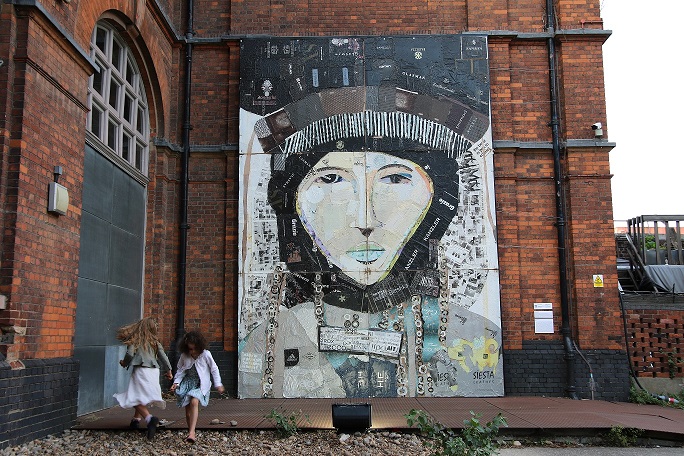
"Post-nomadic Mind" exhibition of Kazakh contemporary art in London
Between these two extremes, it seems that Kazakh fine arts truly blossomed in the late 1950s. It was during this time that a large number of young and talented artists graduated from the best art institutes of the USSR, and entered into Kazakhstan's cultural life. Among them were such outstanding masters as the People's Artists of Kazakhstan Kanafia Telzhanov, Sabur Mambeyev, Aisha Galimbayeva, Moldakhmet Kenbayev, Gulfairus Ismailova, Khakimzhan Nauryzbayev and many other painters, graphic artists and sculptors.
Museums and galleries
Beyond the A. Kasteyev Museum of Arts, Kazakhstan boasts a multitude of fantastic galleries. Located in Almaty's city centre, the Oyu Art Gallery specialises in the best of Kazakh fine art, focusing exclusively on established modern and contemporary artists of Kazakhstan. Over the years, the gallery has showcased a variety of renowned artists, including Alpysbai Kazgulov, Aktoty Smagulova, Akhmet Akhat and others.
The National Museum of Kazakhstan in Nur-Sultan also houses an impressive contemporary art section, showing off the best of Kazakh art from the 20th and 21st centuries. A wider wander around the museum is strongly encouraged, as it covers the history and culture of Kazakhstan from ancient to modern times. Themed halls comprise interactive displays and artefact exhibitions, ranging from a yurt in the Hall of Ethnography to a chronicle of the capital's modern history in the Hall of Nur-Sultan.
The impact of Kazakh art can even be seen in Nur-Sultan's skyline. The Shabyt Art Palace is a striking lens-shaped building, housing the largest art centre in Kazakhstan.
Kazakh fashion
Kazakh fashion is easily identifiable by
its dazzling bright colours, conservative style and adorned ornaments. Traditional garments were originally made from fur, thin felt and woollen cloth that people often produced themselves, changing to cotton in the late 19th century. In the 20th century, materials such as silk, brocade and velvet became more popular, as an indication of wealth and well-being.
According to Vogue, today Kazakhstan has a “bustling fashion industry". Its annual Fashion Week attracts hundreds of artists, designers, models and photographers from across the world, while the country also has a head-turning street style scene.
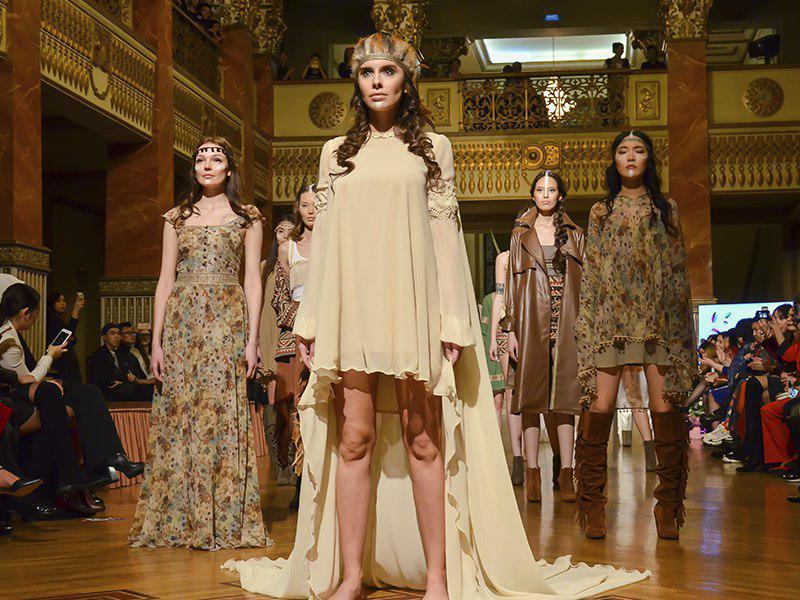
Kazakh Fashion Week 2018
Kazakhstan has several higher education institutions dedicated to the study of fashion, including the Kazakhstan Fashion Institute and the Symbat Academy of Fashion & Technology. Opened in 1996 by the Republican House of Clothing, Knitwear & Footwear, the country's only fashion
company at the time, the Symbat Academy offers a number of different programmes – including Design, Graphic Design, Visual Arts & Draughtsmanship, Decorative Arts, Scenography, Technology & Design for Light Industry Products, Technological Equipment, and Textiles Technology.
One of the rising brands in Kazakhstan is 'Pentatonica', designed by two friends Kira Maysheva and Saule Dzhamil. The team use only natural fabrics, and specialise in transformer pieces that can be worn in several ways, a reflection of the country's resourceful nomadic roots.
Handicrafts – harnesses, felt mats (tekemets), articles made of wood, bone and metal – are lavishly decorated. Headdresses, dresses, bags and saddle-cloths are beautifully embroidered. They use traditional designs and carvings to make and decorate the wooden cups, large bowls and ladles used to serve for kumys (fermented mare's milk).
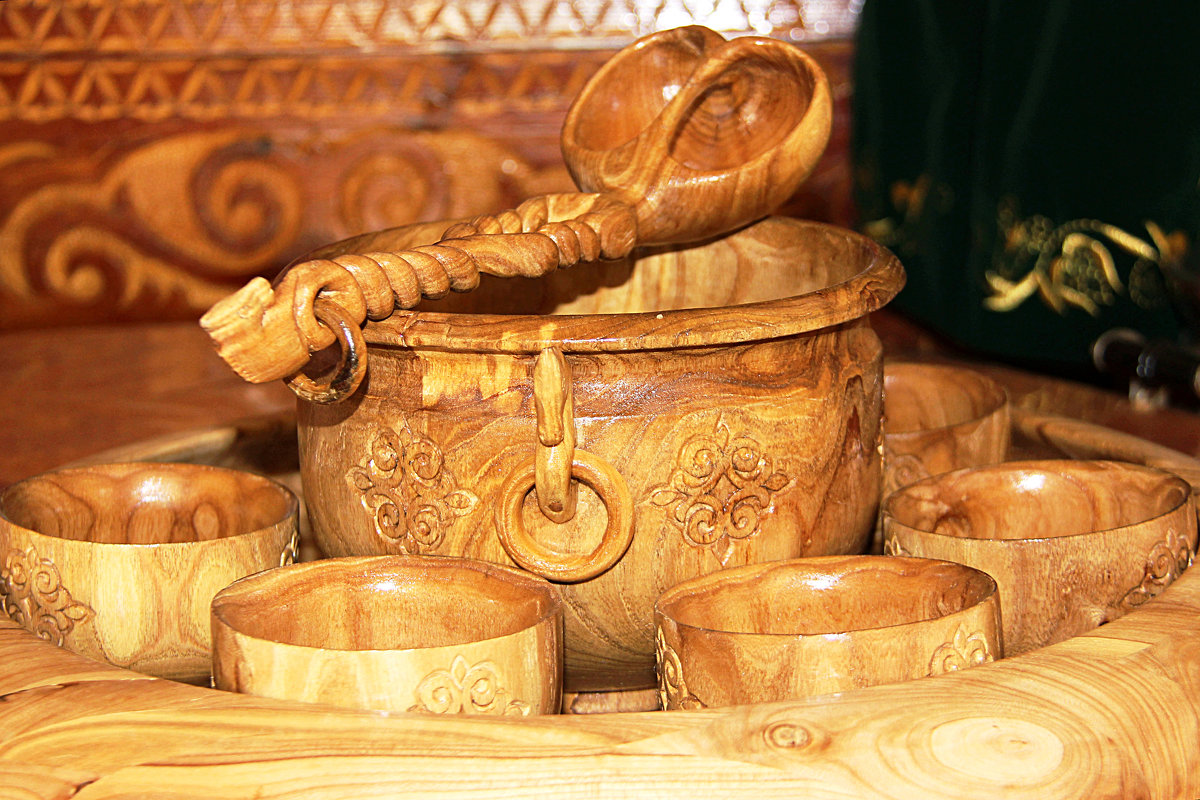
The horns of mountain rams and goats are used to decorate beds and caskets. Leather is used to make quivers, belts, harnesses and flasks (torsyks) for water and kumнs Kazakh artisans are also very skillful jewelers.

Steppe zergers (jewellers) favour white silver. Traditional Kazakh bell-shaped earrings, original bracelets (bilezik), or the traditional bracelet linked to three rings by fine chains will certainly attract you.




